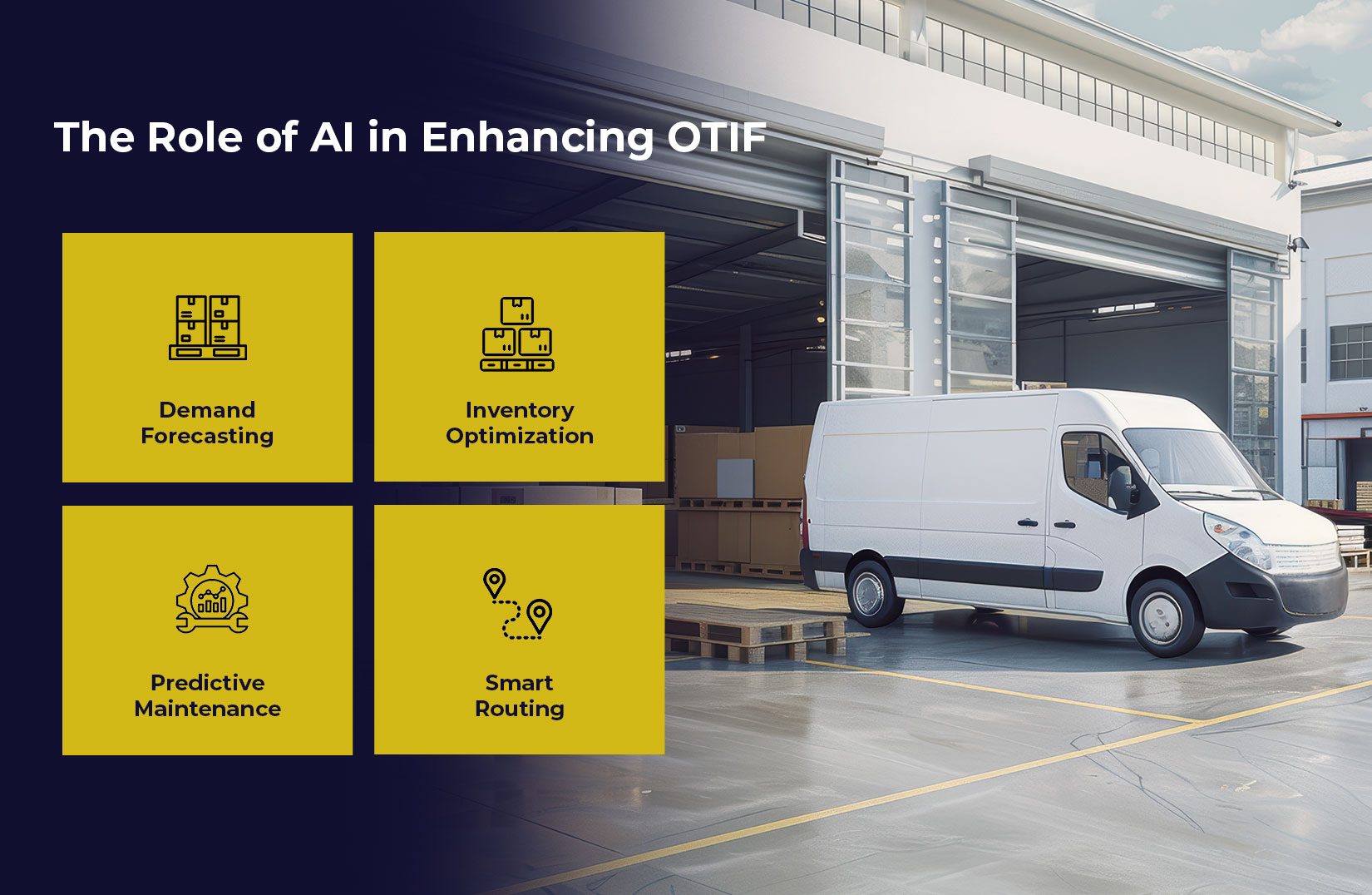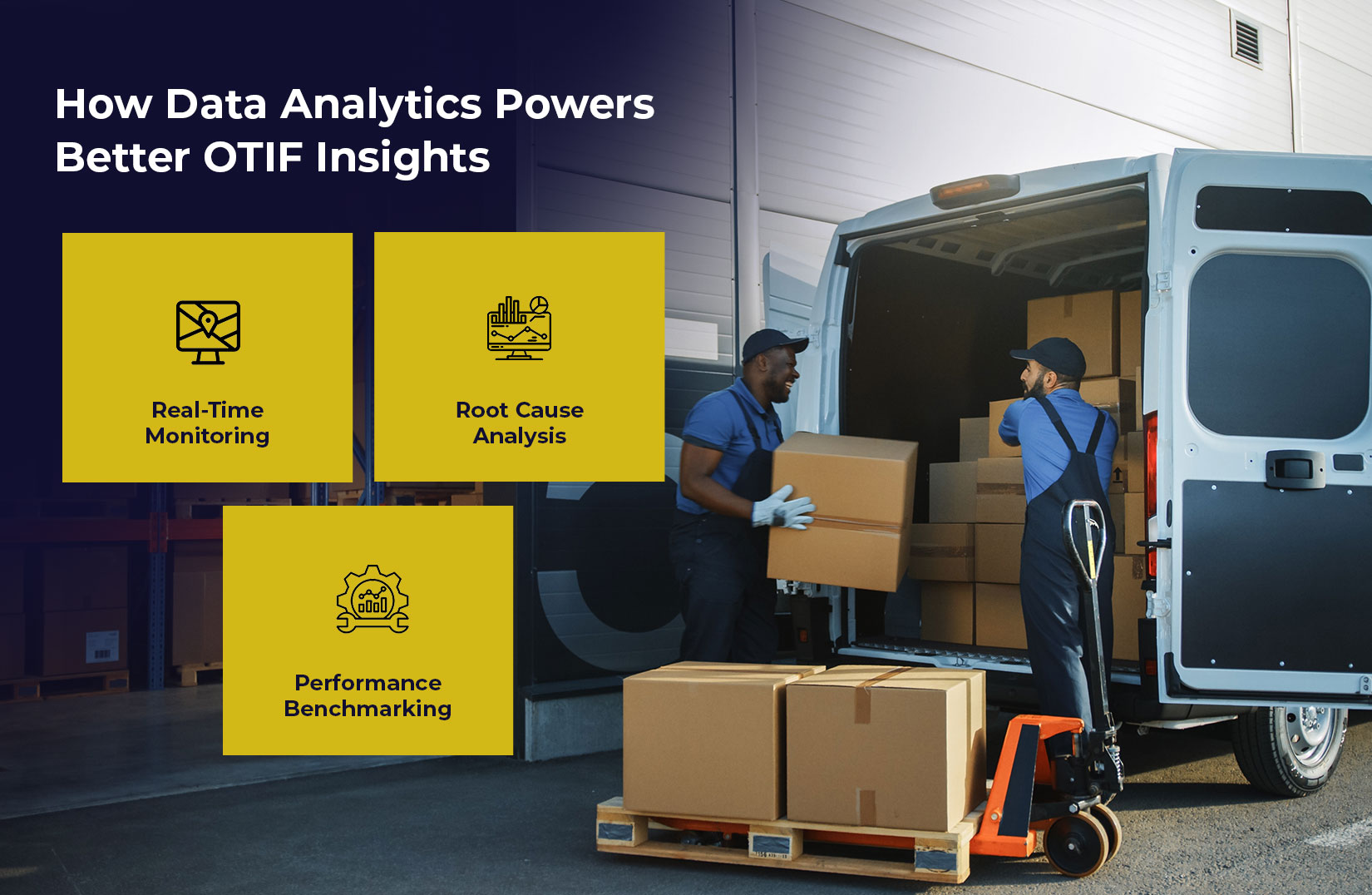
Smarter. Faster. Fuller. The AI Way to Nail OTIF
In today’s fast-paced and increasingly customer-centric supply chain landscape, achieving On Time In Full (OTIF) performance is more critical than ever. OTIF is not just a metric; it represents the reliability and efficiency of a business in fulfilling customer demands accurately and punctually. Companies are facing rising customer expectations, tighter delivery windows, and unpredictable disruptions. In response, Artificial Intelligence (AI) and data analytics are emerging as game-changers for improving On-Time In-Full (OTIF) performance.
Understanding OTIF and Its Importance
On Time In Full (OTIF) measures a supplier’s ability to deliver the correct products in the right quantity, at the right time. It directly influences customer satisfaction, supply chain efficiency, and profitability. According to a McKinsey report, companies that consistently perform well on OTIF see up to a 20% increase in customer retention.
However, improving OTIF performance is not straightforward. It involves managing multiple touchpoints across the supply chain, including inventory, transportation, warehousing, and forecasting. This is where AI and data analytics come in.
The Role of AI in Enhancing OTIF

AI technologies, such as machine learning and predictive analytics, are being increasingly adopted to optimize various aspects of the supply chain. Here are a few ways AI is enhancing OTIF performance:
1. Demand Forecasting:
Traditional forecasting methods often rely on historical data and are unable to adjust for sudden market shifts. AI-driven demand forecasting models can analyze vast datasets in real-time, incorporating variables like seasonality, promotions, and external market trends. This leads to more accurate forecasts and reduces stockouts or overstocking.
2. Inventory Optimization:
AI algorithms can suggest optimal stock levels across multiple locations, helping maintain a balance between holding costs and service levels. This significantly contributes to fulfilling orders in full.
3. Predictive Maintenance:
AI can predict potential equipment failures before they occur by analyzing sensor data and performance trends. This proactive approach helps avoid unplanned downtime, ensuring production remains on schedule to support on-time delivery.
4. Smart Routing:
AI-enabled route optimization tools evaluate real-time traffic conditions, weather forecasts, and delivery priorities to determine the most efficient routes. This improves reliability and helps maintain the ‘On Time’ component of OTIF performance.
How Data Analytics Powers Better OTIF Insights

While AI automates and predicts, data analytics provides visibility and control. Modern OTIF solutions harness the power of big data to provide actionable insights into every stage of the supply chain. With advanced analytics tools, companies can identify inefficiencies, streamline operations, and drive improvements.
1. Real-Time Monitoring:
Advanced OTIF platforms enable real-time monitoring of shipments, inventory, and warehouse operations. This proactive approach allows businesses to identify and address bottlenecks quickly, minimizing disruptions. According to Deloitte, 79% of companies with high-performing supply chains use real-time analytics.
2. Root Cause Analysis:
Data analytics tools help organizations drill down into missed OTIF events to understand whether the issue stemmed from suppliers, warehouse operations, or last-mile delivery. This insight supports more targeted corrective actions. A study by BCI found that 60% of organizations identified analytics as the most effective tool for managing supply disruptions.
3. Performance Benchmarking:
By analyzing historical and current OTIF data, businesses can benchmark performance across regions, suppliers, and products, enabling continuous improvement and accountability. Research from Accenture shows that supply chains using benchmarking saw a 17% improvement in delivery accuracy.
According to a Gartner survey, companies that adopted advanced analytics reported a 15% improvement in OTIF metrics within the first year. Thereby, demonstrating the tangible impact of data-driven strategies.
Leveraging the Best OTIF Software
To fully harness the power of AI and analytics, businesses are turning to the best OTIF software solutions available in the market. These platforms are designed to integrate with existing supply chain systems and offer end-to-end visibility and predictive capabilities.
A robust OTIF platform should offer:
– Seamless integration with ERP and TMS systems
– Customizable dashboards and real-time alerts
– AI-powered forecasting and planning tools
– Automated exception handling workflows
By using a reliable OTIF solution, businesses can proactively address potential delays and improve coordination across their supply chain network.
Case Study: AI-Driven OTIF Transformation
A leading global retailer faced challenges in maintaining consistent OTIF performance across its supplier base. By implementing an AI-powered OTIF platform, the company achieved the following results within six months:
– 25% improvement in on-time deliveries.
– 18% increase in full-order fulfillment.
– 30% reduction in penalties related to late or incomplete deliveries.
The integration of AI and data analytics enabled real-time visibility, automated root-cause analysis, and better collaboration with suppliers.
Future Trends and What Lies Ahead
The future of OTIF performance lies in continued investment in AI and analytics. With advancements in technologies like IoT, blockchain, and digital twins, the accuracy and scope of OTIF solutions will only expand. Companies that prioritize digital transformation will be better equipped to meet evolving customer expectations and regulatory requirements.
Moreover, predictive and prescriptive analytics will shift the focus from reactive to proactive decision-making, allowing businesses to prevent OTIF failures before they occur.
Conclusion
AI and data analytics are revolutionizing how businesses approach On Time In Full (OTIF) performance. From smarter forecasting and inventory management to real-time monitoring and performance optimization, these technologies offer unprecedented opportunities for improvement.
By adopting the best OTIF software and leveraging a comprehensive OTIF platform, organizations can transform their supply chains into agile, customer-centric ecosystems. The right OTIF solution doesn’t just track performance—it drives it.
In a competitive landscape, improving OTIF is no longer optional. It’s a strategic imperative powered by data and driven by AI. Thereby, its the perfect decision to click on the red button below and book a demo with LogiNext Solutions. Get your company empowered with the best OTIF software in the market.
5







@LogiNext